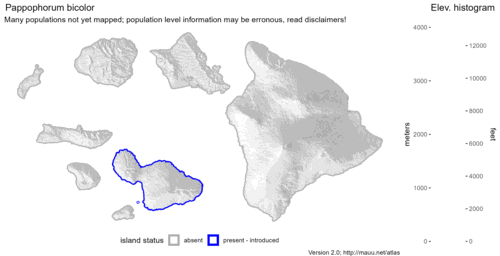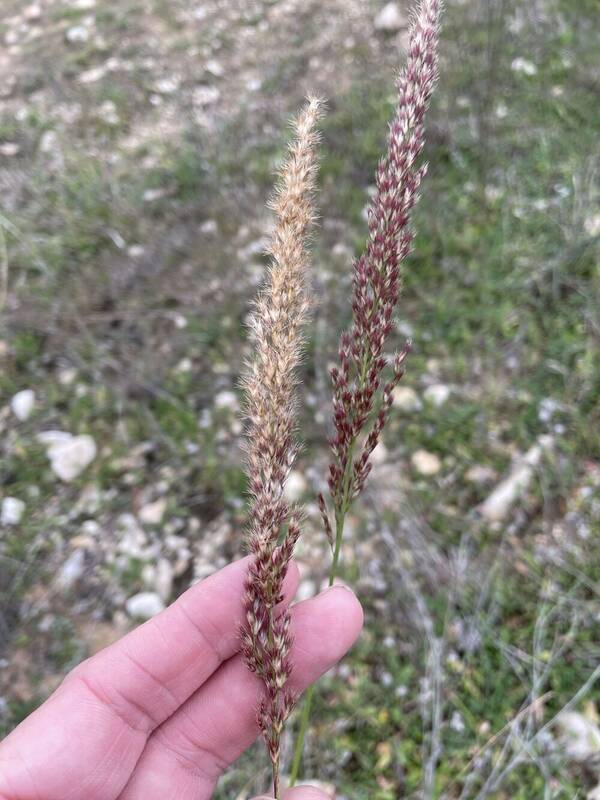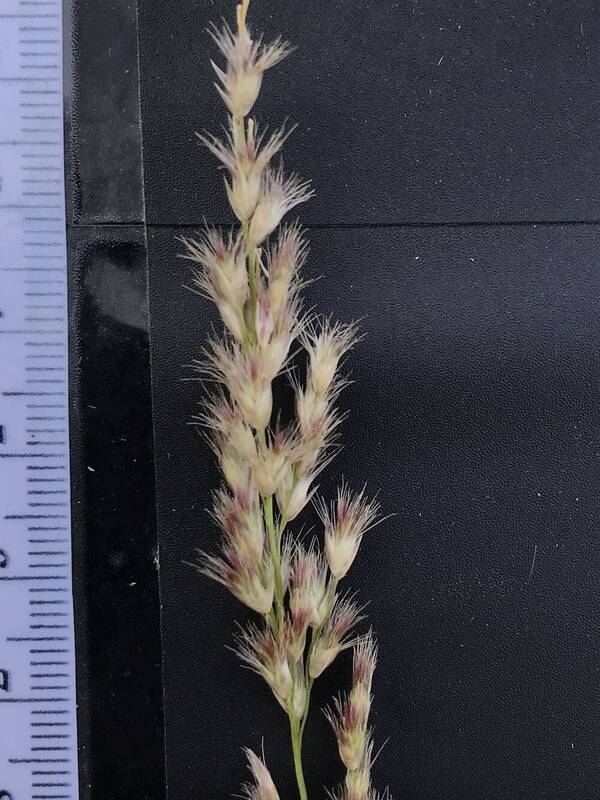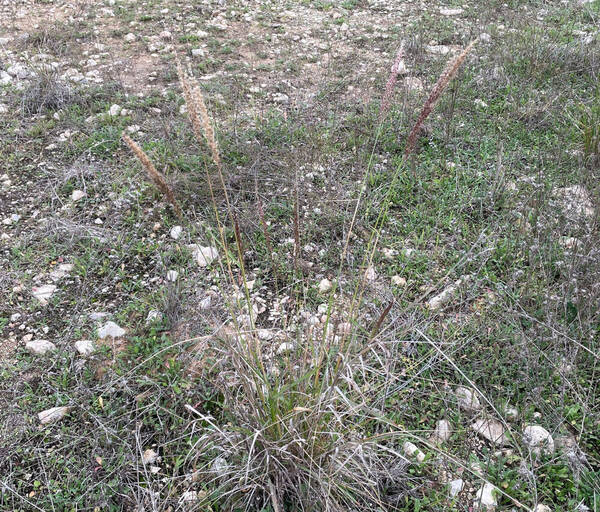Info
Subfamily: Chloridoideae
Genus etymology: Pappophorum = "beard bearing" [Greek] refering to the hairs on the lemma
Species etymology: bicolor = "two colored" [Latin] refering to
Photosynthetic type: C4 (warm season)
Nativity: naturalized - accidental
First recorded in Hawaiʻi: 2008
Map

Inflorescence
 image credit: Sam_Kieschnick
image credit: Sam_Kieschnick image credit: Cody_Stricker
image credit: Cody_StrickerPlant
 image credit: Sam_Kieschnick
image credit: Sam_KieschnickDescription
Plants perennial, caespitose. Culms 30–80(–100) cm. Sheaths mostly glabrous, apices with a tuft of hairs on either side; ligules about 1 mm; blades 10–20(–30) cm long, 2–5 mm wide, flat to involute. Panicles 12–20 cm, narrow but usually with some slightly spreading branches, pink- or purple-tinged. Spikelets with the lower 2 or 3 florets bisexual, distal 1–2 florets sterile. Glumes 3–4 mm, thin, glabrous, apices acute or minutely notched and mucronate; lemmas somewhat firm, usually faintly 7-veined, with 11–15 awns; lowest lemma bodies 3–4 mm, midveins and margins pubescent from the base to about midlength, awns about 1.5 times as long as the lemma bodies; paleas subequal to the lemma bodies or slightly longer. Caryopses about 2 mm. 2n = 100.
(Description source: Barkworth, M.E., Capels, K.M., Long, S. & Piep, M.B. (eds.) 2003. Flora of North America, north of Mexico. Volume 25. Magnoliophyta: Commelinidae (in part): Poaceae, Part 2. Oxford University Press, New York. 783 pp. http://floranorthamerica.org/Pappophorum_bicolor )